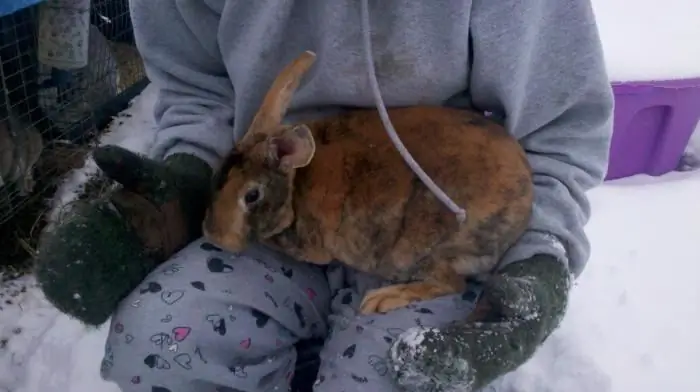2026 Author: Howard Calhoun | [email protected]. Last modified: 2025-01-24 13:10:37
Winter rye is an extremely important fodder and food crop, which contains a large amount of protein (up to 15 percent) and carbohydrates (up to 81 percent). In addition, its grain contains vitamins A, B, and E. Rye bread is baked from flour, which surpasses the wheat analogue in biological value and calorie content. The main agrotechnical significance of the culture, first of all, lies in the fact that due to its rapid growth and high bushiness, it is able to effectively suppress weeds. Rye bran, grain and flour are also used in the form of concentrated feed, which is in no way inferior to perennial grasses in terms of quality. Among other things, winter rye is also used for technical purposes. More specifically, it can be processed into molasses, alcohol and starch, and straw can be used to produce cellulose and acetic acid.

The crop was formed from a weed that littered wheat crops. Its place of origin is Southeast Asia and Transcaucasia. In Ukraine, winter rye first appeared around the first millennium BC, and the first mention of cultivation on Russian territory dates back to the ninthcentury. Now its cultivation is widespread not only in our country, but also in the USA and Western Europe. Despite this, in world terms, among all cereal crops, rye is in one of the last places. The area of its annual crops is about twenty million hectares. When growing rye on fertile soils and with the introduction of a sufficient amount of fertilizers, it gives good yields (up to 20 centners per hectare). At the same time, compared with wheat, this figure is about one and a half times less.

Now a few words about when to sow winter rye. This is done in autumn, when the average temperature is about fifteen degrees. In this case, the probability of its damage by parasites is noticeably reduced, and the culture itself takes root better. Crops are able to withstand frost at 25 degrees. Germination in the soil begins to occur already at 2 degrees Celsius, and friendly shoots are formed when the temperature is 10 degrees. Thanks to its well-developed root system, winter rye even tolerates spring droughts. Moreover, during its growth period, the culture is not very demanding on humidity, therefore it develops well both in long heavy rains and in heat. She is not picky about the type of soil. Rye grows normally even on sandy and infertile soil. Compared to other grains, it is better at absorbing phosphorus and potassium directly from the ground.

Tetraploid anddiploid varieties of winter rye. The difference between them lies in the number of chromosomes that make up the somatic cells of the plant. The first of these varieties appeared relatively recently and has 28 chromosomes. As for the second, it has 14 chromosomes. Diploid varieties are more widely distributed. The most popular of them are such as Niva, Volya and Boguslavka. In the tetraploid group, we note September, Pukhovchanka and Drevlyanskaya.
Recommended:
Sowing rye: description and cultivation features

Almost half of the world's acreage is devoted to growing cereals. Rye is consistently in the top ten most popular crops. Of course, it is far from the big three cereals (wheat, rice, corn), but almost 13 million tons of production per year is also impressive. For many years, the leaders in the cultivation of rye have been three countries - Germany, Russia and Poland
What is winter? Sowing, germination and care of winter crops

One of the main agricultural products is grain. Crops of cereals, which are introduced into the soil at the end of summer or autumn, are called winter. Winter varieties have a higher yield than spring varieties
What is good about winter rye as green manure?

One of the most common problems that reduce yields is soil depletion. An effective method of combating this process is the use of green fertilizers, or green manure. Sowing green manure crops increases soil fertility, enriching it with humus
What to feed a rabbit in winter? Breeding rabbits in winter. Keeping and feeding rabbits in winter

We all know this catchphrase "Rabbits are not only valuable fur …", but even to get this fur, not to mention 3-4 kilograms of easily digestible dietary meat, you need to make a lot of effort
Technology of cultivation of winter rye for grain

The technology of cultivation of winter rye involves the implementation of such procedures, for example, as the main and pre-sowing tillage, harrowing, herbicide application, pest control. This crop can be harvested both by direct combining and by separate methods

